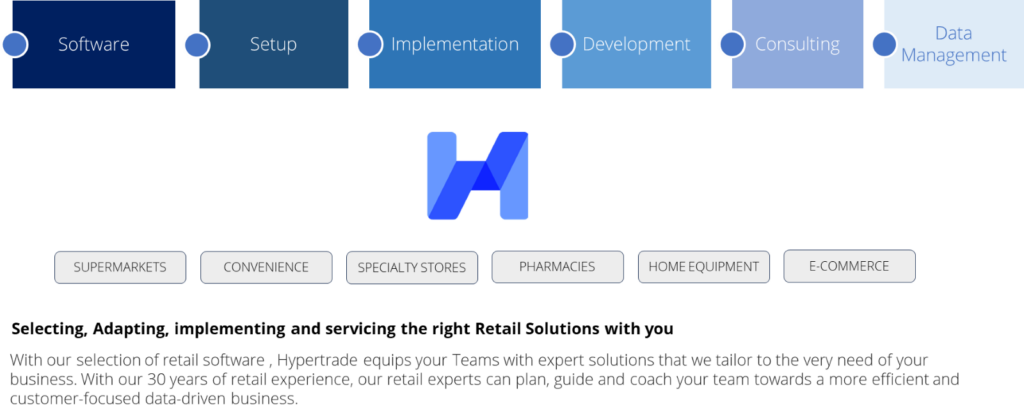Executive Summary
Retail has long revolved around browsing and searching — two actions that define how shoppers discover and decide. From walking aisles to scrolling screens, the responsibility has always been on the consumer to find what they need.
But the rise of Agentic AI is redefining commerce. The customer journey is shifting from reactive exploration to proactive, autonomous problem-solving. In this new paradigm, intelligent agents don’t just assist; they act — anticipating needs, evaluating options, and executing purchases across ecosystems.
This isn’t a minor step in personalization. It’s a fundamental re-architecture of retail. As shoppers delegate decisions, retailers must transform their structures, data, and teams to remain relevant in a world where the buyer is no longer human, but algorithmic.
1. The Agentic Shopper: From Search to Solution
For decades, consumers have been active participants in commerce. Even as technology improved discovery, it never removed friction — it only made searching faster. The onus remained on the shopper.
Agentic AI changes that entirely. By combining contextual understanding, personal data, and real-time market intelligence, the agent becomes the shopper’s proxy — not just finding products, but solving needs.
From Browsing to Anticipation
Instead of typing “new running shoes,” the agent knows from wearable data and past behavior that you need them.
“Based on your mileage and the wear pattern on your last pair, I’ve found three models that match your sustainability and comfort preferences. Shall I order one?”
From Product to Solution
Instead of “show me sundresses,” the agent responds to “I need to refresh my summer wardrobe,” curating complete outfit solutions across brands, budgets, and sustainability preferences.
From Price to Value
Agents weigh parameters that humans can’t easily balance — ethics, locality, quality, and speed. The algorithm becomes a value interpreter, not just a price comparator.
From Transaction to Trust
Once approved, the agent handles everything: payment, delivery, and even post-purchase feedback. For the shopper, buying becomes background. The focus shifts from shopping as a task to shopping as an outcome.

2. The Agentic Retailer: Rethinking How Teams Compete
If customers delegate, retailers must reorganize. The structures designed for discovery and conversion must evolve into systems built for agentic enablement — ensuring that AI agents can easily understand, evaluate, and select their products.
Key Organizational Shifts
1. Marketing & Customer Acquisition: From Impressions to Algorithmic Preference
Traditional marketing optimizes for clicks and conversions. In the agentic era, success depends on being preferred by AI agents.
- Team Focus: Structuring brand and product data so that agents can easily interpret and rank it.
- New Competency: Generative Engine Optimization (GEO) — ensuring AI systems understand and prioritize your offer.
- New Roles: Agent Partnership Managers, Algorithmic Trust Builders, AI Data Strategists.
- Metric of Success: From impressions → to agent recommendations and transactions initiated by AI.
Pull Quote: “The new battleground in marketing isn’t visibility — it’s algorithmic preference.”

2. Merchandising & Product Management: From Assortment to Agent-Driven Curation
Merchandisers have always optimized for human perception — store shelves, visual layouts, and browsing logic. Tomorrow’s merchandising must speak machine.
- Team Focus: Define every product with rich, standardized metadata — attributes like sustainability score, materials, certifications, compatibility, and performance context.
- Goal: Create “agent-readable” catalogs that make it easy for AI to match your products to user needs.
- New Roles: Data Attribute Specialists, Agent-Centric Product Developers, Solution Curators.
- Metric of Success: From SKU visibility → to agent match rate.

3. Customer Service & Experience: From Reactive to Proactive Advocacy
As routine service queries are automated, human agents will handle fewer but higher-value interactions.
- Team Focus: Solve complex, emotional, or strategic customer issues where empathy and judgment are irreplaceable.
- Support Tools: Internal AI copilots that surface the right answers in real time.
- New Roles: AI-Empowered Experience Designers, Complex Problem Solvers, Human Relationship Builders.
Customer service becomes the emotional layer in an increasingly automated experience — the bridge between algorithmic efficiency and human trust.

4. Store Operations & Employee Experience: From Transactional to Experiential
Physical stores will remain crucial, but their purpose will shift. They’ll become immersive environments where humans and AI collaborate to create experience-based commerce.
- Team Focus: Use AI to manage inventory, pricing, and personalized service suggestions.
- Employee Empowerment: Associates will receive real-time AI prompts about shopper preferences, enabling richer engagement.
- New Roles: Experiential Designers, AI-Augmented Associates, Community Engagement Leads.
- Metric of Success: From sales per square meter → to engagement per visit.

5. IT & Data Infrastructure: From Systems Management to Agentic Enablement
The technical foundation of retail must evolve from fragmented systems to agent-ready ecosystems.
- Team Focus: Build API-first architectures and real-time data synchronization to communicate seamlessly with AI agents.
- Ethical Imperative: Implement robust data governance and transparency so agents (and users) trust your ecosystem.
- New Roles: Agent API Developers, AI Infrastructure Architects, Data Governance & Ethics Officers.
- Metric of Success: From uptime → to agent integration reliability.

3. The CEO Agenda: Leading in the Agentic Age
The agentic shift is not just an operational change — it’s a strategic inflection point. It demands C-suite leadership to reimagine the organization’s purpose, capabilities, and partnerships.
Six Questions Every CEO Should Be Asking
- Strategic Vision
Are we preparing our brand to earn Algorithmic Preference — or are we still optimizing for web traffic and app downloads?
- Data Readiness
Is our product and brand data structured, enriched, and syndicated in a way that’s consumable by AI agents?
- Team Evolution
What’s our roadmap for re-skilling marketing, merchandising, and service teams for an agent-centric ecosystem?
- Trust & Transparency
How will we maintain customer trust when AI intermediates most purchase decisions? What transparency standards will we uphold?
- Ecosystem Strategy
Which super-agent platforms (e.g., Amazon’s Rufus, Google Gemini, OpenAI ChatGPT, or Meta AI) will dominate our category — and how will we partner with them?
- Competitive Agility
If competitors integrate faster into the agentic ecosystem, could our brand become invisible to algorithms that decide what customers see and buy?
Pull Quote: “In the age of autonomous commerce, the risk isn’t losing customers — it’s becoming invisible to the algorithms that serve them.”

4. From Insight to Action: The Hypertrade Perspective
At Hypertrade, we already see the agentic shift emerging in our collaborations between retailers and suppliers. The move from manual analytics to AI-assisted decision workflows is the first step toward autonomous, outcome-driven retail.
Our mission remains the same:
To turn data into immediate, executable action — bridging insight and impact.
The next chapter of retail will belong to organizations that treat AI not as a reporting layer but as a decision layer.
The Agentic Revolution is no longer theoretical. It is unfolding now — in every algorithm, every product recommendation, every workflow automation.
Retailers who act today to realign data, structure, and teams will lead in the era of autonomous commerce.
Those who wait will find themselves excluded — not by consumers, but by code.






